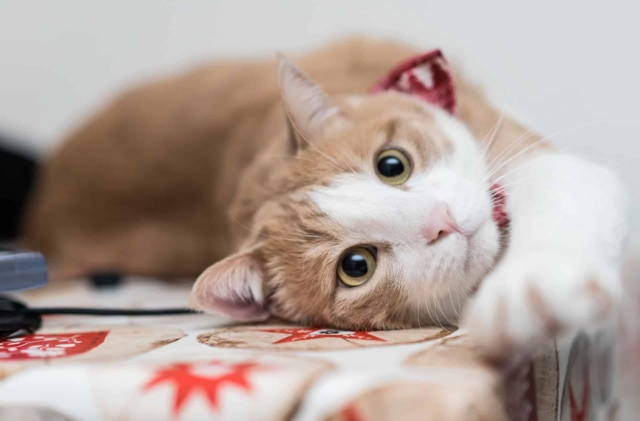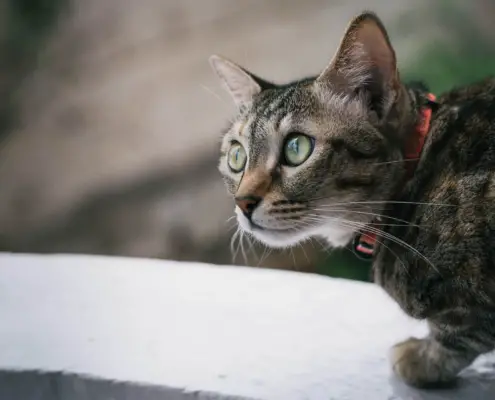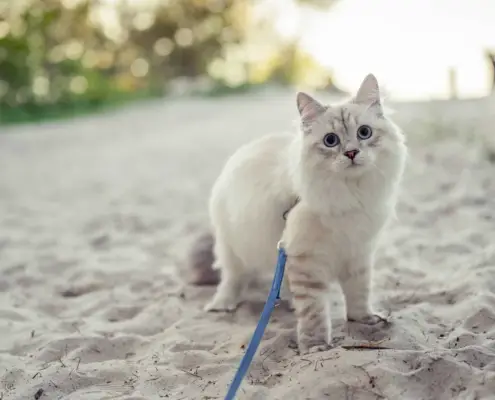
Cats have always captivated humans with their mesmerizing eyes. One of the most fascinating aspects of a cat’s eyes is their ability to dilate and contract their pupils. Have you ever wondered why a cat’s pupils go big? In this article, we will explore the science behind this phenomenon and delve into the reasons behind cat pupils going big.
The anatomy of a cat’s eye
To understand why cat pupils go big, it is essential to have a basic understanding of the anatomy of a cat’s eye. A cat’s eye consists of several key components, including the cornea, iris, lens, and retina. The cornea is the transparent outer layer that protects the eye, while the iris is the colored part of the eye that surrounds the pupil. The lens focuses light onto the retina, which contains the cells responsible for vision.
How cat pupils work
The size of a cat’s pupil is controlled by the iris, a muscular structure that acts like a camera aperture. When the light is bright, the iris contracts, making the pupil smaller to regulate the amount of light entering the eye. Conversely, in low light conditions, the iris relaxes, allowing the pupil to dilate and gather as much available light as possible. This ability to adjust the size of the pupil is crucial for a cat’s vision in various lighting conditions.
Adaptive function of cat pupils
The ability of a cat’s pupils to go big serves several adaptive functions. In dim lighting, dilated pupils enable cats to see better in the dark. This is particularly advantageous for their hunting ability, as it allows them to locate prey more effectively. Cats are natural predators, and their eyes have evolved to provide them with an advantage in their nocturnal activities.
Additionally, dilated pupils also play a role in communication. Cats use their eyes as a means of expressing emotions. When a cat is frightened or agitated, their pupils can rapidly dilate, indicating their discomfort. On the other hand, when a cat is relaxed or content, their pupils constrict to smaller sizes. Understanding these visual cues can help humans better interpret a cat’s mood and respond accordingly.
Factors that influence cat pupil dilation
Several factors can influence the dilation of a cat’s pupils. One of the primary factors is the level of ambient light. As mentioned earlier, in low light conditions, the pupils dilate to allow more light in. Similarly, bright light causes the pupils to constrict to protect the sensitive inner structures of the eye from excessive light exposure.
Another factor that can influence cat pupil dilation is arousal or excitement. When a cat becomes excited or stimulated, their pupils may dilate as a physiological response. This can be observed when a cat is engaged in play or encounters something that piques their curiosity. Conversely, when a cat is relaxed or disinterested, their pupils will remain more constricted.
Emotional meaning behind cat pupils going big
Apart from environmental factors, a cat’s pupil dilation can also reveal their emotional state. For example, fear or anxiety can cause a cat’s pupils to dilate significantly. This is an instinctive response to prepare for a potential threat. Conversely, when a cat is experiencing pleasure or contentment, their pupils may constrict to smaller sizes. Understanding these emotional cues can help cat owners provide a conducive environment for their feline companions.
Health conditions and cat pupil dilation
While pupil dilation is a normal physiological response, it can also be an indicator of underlying health conditions. Certain diseases or injuries can cause abnormal pupil dilation in cats. For instance, if a cat’s pupils are always dilated or fail to constrict appropriately, it may signal an issue with the nervous system or eye health. It is crucial to monitor any persistent abnormal pupil dilation and consult a veterinarian if necessary.
Cat pupil dilation in different lighting conditions
A cat’s eyes are incredibly adaptable, allowing them to see in various lighting conditions. In bright light, their pupils constrict to protect their sensitive retinas from excessive light exposure. Conversely, in dim lighting, their pupils dilate to maximize the amount of available light entering the eye. This impressive ability allows cats to navigate their surroundings effectively, whether it’s hunting prey or exploring their environment.
How to interpret a cat’s mood based on their pupils
Understanding a cat’s mood based on their pupils can be a valuable skill for cat owners. Dilated pupils can indicate fear, anxiety, or excitement, while constricted pupils may suggest contentment or relaxation. However, it is essential to consider other body language cues and the overall context before drawing conclusions solely based on pupil size. By observing your cat’s eyes along with their body posture and vocalizations, you can better understand their emotional state and respond accordingly.
Appreciating the beauty and complexity of cat pupils going big
The science behind cat pupils going big is a fascinating subject that highlights the complexity of feline anatomy and behavior. Cat eyes have evolved to provide them with exceptional vision, adaptability, and communication abilities. By understanding the reasons behind cat pupils going big, we can appreciate the beauty and complexity of these mesmerizing eyes. So next time you gaze into your cat’s eyes, take a moment to appreciate the wonders of nature that lie within them.
If you enjoyed my article, I would appreciate you sharing it with your network.

Sima Ndlebe
Sima writes for CatBuzz. He is interested in Cats, Health and Fitness, and Entrepreneurship.
Published: 5 December 2023



